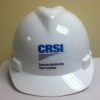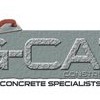
The CRSI Foundation is a nonprofit educational foundation responsible for funding and administering graduate and undergraduate scholarships for architectural and/or engineering students; and scholarships and/or training programs at vocational/technical schools which offer programs in estimating and/or detailing of reinforcing steel. CRSI Foundation works with the CRSI Education Committee in designing and implementing programs. The Foundation fosters the mission of the Institute through supporting research fellowships and projects that ultimately advance the reinforced concrete industry.
The joists act like small beams. This floor system is very economical because the formwork is readily available, and less reinforcing is need. Because there's only a small span between each joist, the slab can be thinner. This system is not only economical but can use flying form systems. It also utilizes smaller columns than the traditional flat plate system. Provides uniform clear space below slab as well as providing flexible layout of columns/partitions. This system is similar to the two-way flat plate system except there is a drop panel to provide extra thickness around the columns.
Concrete pavements are designed and constructed to provide a durable and comfortable driving surfaces and these are ideal for high traffic highways and airport pavements. Concrete pavements have been refined into three common types: Continuously Reinforced Concrete Pavement (CRCP), Jointed Reinforced Concrete Pavement (JRCP), and Jointed Plain Concrete Pavement (JPCP). CRCP is fully reinforced along the entire length. CRCP naturally forms tight transverse cracks to evenly transfer loads. The transverse cracks do not impair the structural integrity of the pavement.
Appropriate concrete floor systems provide the necessary flexibility for modification as operational or tenant needs change. Building Code Minimums are not intended to ensure building occupancy following a threat event. If you do not insist on a more resilient "code-plus" design, the minimum will most likely be the result. When resilience and durability matters, no building system performs as reliably, or as economically as steel reinforced concrete. Concrete walls and floors provide the mass required to effectively reduce the transmission of sound.
For more than 70 years, cast-in-place reinforced concrete has influenced the construction of buildings. Reinforced concrete provides forward-looking owners, designers, and builders with a cost-effective, aesthetically appealing, and practical material suitable to the widest possible variety of building types. Advances in material composition and construction methods have made cast-in-place concrete an even more compelling choice in the 21st century. With reinforced increased carrying capacity, high-strength concrete today requires smaller load-bearing columns, thereby increasing the total amount of usable, income-producing floor space.
CRSI is happy to announce CMT Highway, LLC has joined the Institute as a Member in the Associate – Coater (Non-Fabr… https://t.co/rnh6DdWIHq
CRSI's new Technical Note outlines the benefits of using steel reinforced concrete shear walls in building structur… https://t.co/KVjQMb5Wq4
The highly anticipated Design Guide on the ACI 318 Building Code Requirements for Structural Concrete is available… https://t.co/dcGOLZZ5fT
The #GlobalConcreteSummit has been a great opportunity for CRSI staff to exchange ideas, knowledge, and tools to he… https://t.co/UBNtjWaEz2
Join David Shepherd, AIA, Tomorrow at 2:00PM CT / 3:00PM ET at the #GlobalConcreteSummit as he showcases CRSI resou… https://t.co/1P5bS2JjYp
CRSI is proud to be a Gold Sponsor of the #GlobalConcreteSummit happening now through December 10! There's still ti… https://t.co/S8CPH4OUfx
#CyberMonday Sale Ends TODAY! Take 20% Off ALL Print & Single License PDF Publications (sorry, multi-licenses or bu… https://t.co/jrcoOg8vn5
Similar Businesses







